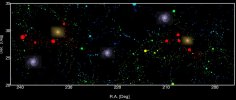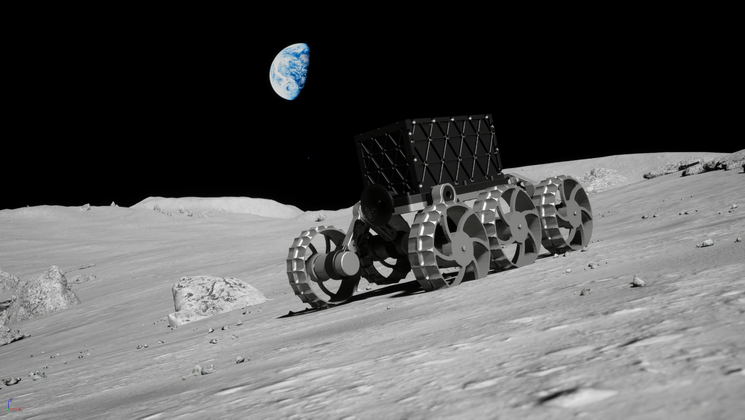-
Faculty of Arts and HumanitiesDean's Office, Faculty of Arts and HumanitiesJakobi 2, r 116-121 51005 Tartu linn, Tartu linn, Tartumaa EST0Institute of History and ArchaeologyJakobi 2 51005 Tartu linn, Tartu linn, Tartumaa EST0Institute of Estonian and General LinguisticsJakobi 2, IV korrus 51005 Tartu linn, Tartu linn, Tartumaa EST0Institute of Philosophy and SemioticsJakobi 2, III korrus, ruumid 302-337 51005 Tartu linn, Tartu linn, Tartumaa EST0Institute of Cultural ResearchÜlikooli 16 51003 Tartu linn, Tartu linn, Tartumaa EST0Institute of Foreign Languages and CulturesLossi 3 51003 Tartu linn, Tartu linn, Tartumaa EST0School of Theology and Religious StudiesÜlikooli 18 50090 Tartu linn, Tartu linn, Tartumaa EST0Viljandi Culture AcademyPosti 1 71004 Viljandi linn, Viljandimaa EST0Professors emeriti, Faculty of Arts and Humanities0Associate Professors emeriti, Faculty of Arts and Humanities0Faculty of Social SciencesDean's Office, Faculty of Social SciencesLossi 36 51003 Tartu linn, Tartu linn, Tartumaa EST0Institute of EducationJakobi 5 51005 Tartu linn, Tartu linn, Tartumaa EST0Johan Skytte Institute of Political StudiesLossi 36, ruum 301 51003 Tartu linn, Tartu linn, Tartumaa EST0School of Economics and Business AdministrationNarva mnt 18 51009 Tartu linn, Tartu linn, Tartumaa EST0Institute of PsychologyNäituse 2 50409 Tartu linn, Tartu linn, Tartumaa EST0School of LawNäituse 20 - 324 50409 Tartu linn, Tartu linn, Tartumaa EST0Institute of Social StudiesLossi 36 51003 Tartu linn, Tartu linn, Tartumaa EST0Narva CollegeRaekoja plats 2 20307 Narva linn, Ida-Virumaa EST0Pärnu CollegeRingi 35 80012 Pärnu linn, Pärnu linn, Pärnumaa EST0Professors emeriti, Faculty of Social Sciences0Associate Professors emeriti, Faculty of Social Sciences0Faculty of MedicineDean's Office, Faculty of MedicineRavila 19 50411 Tartu linn, Tartu linn, Tartumaa ESTInstitute of Biomedicine and Translational MedicineBiomeedikum, Ravila 19 50411 Tartu linn, Tartu linn, Tartumaa ESTInstitute of PharmacyNooruse 1 50411 Tartu linn, Tartu linn, Tartumaa ESTInstitute of DentistryL. Puusepa 1a 50406 Tartu linn, Tartu linn, Tartumaa ESTInstitute of Clinical MedicineL. Puusepa 8 50406 Tartu linn, Tartu linn, Tartumaa ESTInstitute of Family Medicine and Public HealthRavila 19 50411 Tartu linn, Tartu linn, Tartumaa ESTInstitute of Sport Sciences and PhysiotherapyUjula 4 51008 Tartu linn, Tartu linn, Tartumaa ESTProfessors emeriti, Faculty of Medicine0Associate Professors emeriti, Faculty of Medicine0Faculty of Science and TechnologyDean's Office, Faculty of Science and TechnologyVanemuise 46 - 208 51003 Tartu linn, Tartu linn, Tartumaa ESTInstitute of Computer ScienceNarva mnt 18 51009 Tartu linn, Tartu linn, Tartumaa ESTInstitute of GenomicsRiia 23b/2 51010 Tartu linn, Tartu linn, Tartumaa ESTEstonian Marine Institute0Institute of PhysicsInstitute of ChemistryRavila 14a 50411 Tartu linn, Tartu linn, Tartumaa EST0Institute of Mathematics and StatisticsNarva mnt 18 51009 Tartu linn, Tartu linn, Tartumaa EST0Institute of Molecular and Cell BiologyRiia 23, 23b - 134 51010 Tartu linn, Tartu linn, Tartumaa ESTTartu ObservatoryObservatooriumi 1 61602 Tõravere alevik, Nõo vald, Tartumaa EST0Institute of TechnologyNooruse 1 50411 Tartu linn, Tartu linn, Tartumaa ESTInstitute of Ecology and Earth SciencesJ. Liivi tn 2 50409 Tartu linn, Tartu linn, Tartumaa ESTProfessors emeriti, Faculty of Science and Technology0Associate Professors emeriti, Faculty of Science and Technology0Institute of BioengineeringArea of Academic SecretaryHuman Resources OfficeUppsala 6, Lossi 36 51003 Tartu linn, Tartu linn, Tartumaa EST0Area of Head of FinanceFinance Office0Area of Director of AdministrationInformation Technology Office0Administrative OfficeÜlikooli 17 (III korrus) 51005 Tartu linn, Tartu linn, Tartumaa EST0Estates Office0Marketing and Communication OfficeÜlikooli 18, ruumid 102, 104, 209, 210 50090 Tartu linn, Tartu linn, Tartumaa EST0Area of Vice Rector for Academic AffairsOffice of Academic Affairs0University of Tartu Youth AcademyUppsala 10 51003 Tartu linn, Tartu linn, Tartumaa EST0Student Union OfficeÜlikooli 18b 51005 Tartu linn, Tartu linn, Tartumaa EST0Centre for Learning and TeachingArea of Vice Rector for ResearchUniversity of Tartu LibraryW. Struve 1 50091 Tartu linn, Tartu linn, Tartumaa EST0Grant OfficeArea of Vice Rector for DevelopmentCentre for Entrepreneurship and InnovationNarva mnt 18 51009 Tartu linn, Tartu linn, Tartumaa EST0University of Tartu Natural History Museum and Botanical GardenVanemuise 46 51003 Tartu linn, Tartu linn, Tartumaa EST0International Cooperation and Protocol Office0University of Tartu MuseumLossi 25 51003 Tartu linn, Tartu linn, Tartumaa EST0Area of RectorRector's Strategy OfficeInternal Audit Office
A high percentage of galaxies in low-density regions are not star-forming

At the largest scales, the structure of the Universe resembles a huge network, which is called the cosmic web. In the cosmic web, nodes are formed by rich galaxy clusters, which are connected by chains of galaxies – filaments. Between filaments there are voids, which contain almost no visible matter. Voids are of various size and some of them may be really huge. The largest systems in the cosmic web are galaxy superclusters, which have the richest galaxy clusters. Superclusters occupy only 1% of the total volume of the Universe. The rest of the volume of the Universe is covered by underdense regions penetrated by filaments of poor galaxy groups and single galaxies: for example galaxies that do not have bright galaxies in their neighbourhood. However, such galaxies may have dwarf satellite galaxies. There are no rich galaxy clusters in underdense regions.
The formation of galaxies started already in the very early Universe. At present, according to the average age of stellar populations, galaxies can be divided into those in which star formation ended already a long time ago (so-called quenched galaxies) and those that actively form stars even now. It is well known that the central parts of rich galaxy clusters are mostly populated by galaxies that fell into clusters billions of years ago. In such galaxies, star formation ended several billions of years ago under the influence of various processes in the cluster environment. This means that stellar populations in such galaxies are old. Typically, such galaxies are elliptical and red; the red colour comes from the colour of the old stars in them.
Studies of galaxy clusters and groups have shown that in the regions more densely populated by galaxies there are always more galaxies with old stellar populations. Furthermore, it has been shown that as the density of galaxies decreases, there are fewer old galaxies, and in the lowest density environments there are almost no old galaxies; instead, such environments are populated by galaxies that are blue and either mostly spiral or irregularly shaped. Their blue colour suggests that stars actively form within them. This trend is also well explained by theories that describe processes that end star formation in galaxies in dense environments.
In our recent paper, which has been accepted for publication in the journal Astronomy and Astrophysics, we asked the following question: is it possible that such old galaxies which populate central regions of galaxy clusters can also be found in big voids between superclusters, which are populated by poor groups and single galaxies, and where the evolution of galaxies should be considerably different from that in the cluster centres? Quite surprisingly, our study showed that almost one third of galaxies in voids are very similar in their properties to those galaxies that populate rich clusters. The formation of stars ended at least four billion years ago, and their stellar masses are almost as large as the stellar masses of galaxies in clusters. In groups and clusters the properties of galaxies are very similar. The largest differences between galaxy properties are within groups and clusters, where the brightest cluster or group galaxies have considerably older stellar populations and higher stellar masses than the satellite galaxies around them.

Therefore, our study has shown that although the global environment strongly affects the formation of galaxy groups and clusters, its influence on galaxy properties is surprisingly small. Our results suggest that galaxy properties are mostly affected by their birthplace in the cosmic web in two aspects. Firstly, the birthplace determines whether a galaxy becomes a member of a rich galaxy cluster (perhaps even the brightest galaxy!), becomes a member of a poor group, or stays single. Secondly, galaxy properties are determined by their close environment, the dark matter halo around them, and processes at work within the halo. The influence of the larger environment is smaller than thought earlier.
This result may considerably affect our understanding of galaxy evolution. To understand galaxy evolution better, we plan to analyse galaxies in larger volumes and include fainter galaxies than in this study.
Read the article here.
Authors:
Maret Einasto, Rain Kipper, Peeter Tenjes, Jaan Einasto, Elmo Tempel, Lauri Juhan Liivamägi
Tartu Observatory, Department of galaxy physics and cosmology
Einasto et a. 2022, Death at watersheds: galaxy quenching in low-density Environments. A&A 668, A69
Read more similar news






